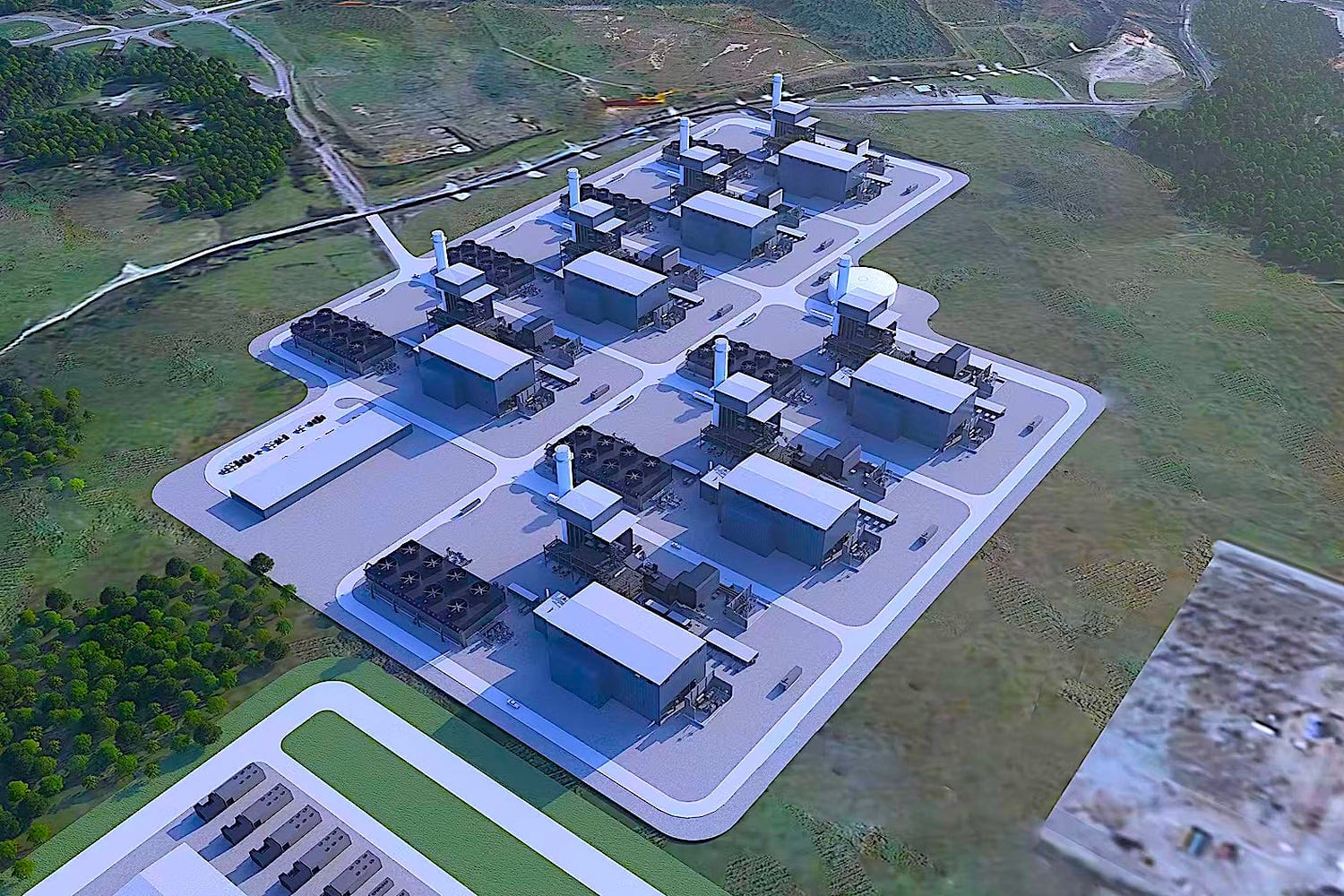Summary:
- A $10 billion AI data center powered by natural gas is being built on the site of Pennsylvania’s largest former coal plant.
- The project will generate 4.5 gigawatts of electricity—equal to four nuclear reactors—to power energy-hungry AI systems.
- It’s part of a larger trend of repurposing old fossil fuel sites for modern infrastructure—but raises questions about climate trade-offs.
The coal stacks at Homer City came down just two weeks ago. Now, rising in their place? A $10 billion natural gas-powered AI data center campus—one of the biggest and boldest energy infrastructure flips we’ve seen yet.
Set in the hills of western Pennsylvania, the old Homer City coal plant once powered much of the state with smoke-belching intensity. Now, its 3,200 acres are being transformed into a 4.5-gigawatt digital fortress, all in service of artificial intelligence. The same land that once burned the dirtiest fossil fuel on Earth is being retooled to power machines that think faster than we ever could. Welcome to the next frontier: coal to code.
AI’s Appetite Is Reshaping the Grid
Here’s the thing: AI isn’t just smart—it’s hungry. Training and running large-scale AI models requires massive amounts of energy, and with demand from tech companies skyrocketing, developers are racing to secure power wherever they can get it. Natural gas, though still a fossil fuel, emits less carbon than coal and is readily available—especially near the Marcellus shale basin, which sits right next to the Homer City site.
The project, led by Homer City Redevelopment and Kiewit Power, will use seven gas turbines built by GE Vernova. It’s being financed in part by hedge fund Knighthead Capital, though the big tech companies likely to use the facility haven’t been named yet. And while some might call it progress, others see it as a climate compromise wrapped in cutting-edge packaging.
Better Than Coal, But Still Burning
Let’s be clear: natural gas is still a fossil fuel. Yes, it emits about 50-60% less CO₂ than coal when burned, but it also leaks methane, a greenhouse gas that’s even more potent in the short term. So while this shiny new AI campus might be cleaner than its predecessor, it’s not clean.
The good news? Projects like this show we can reuse old industrial sites instead of paving over new land. It’s efficient, it avoids fresh environmental disruption, and it creates a new identity for towns that were once fossil-fuel dependent. But the bigger picture still matters. If we’re building the next digital era on the back of fossil fuels—even "cleaner" ones—are we really moving forward? Or just changing the color of the smoke?
The Future Is Here. What Powers It Matters.
The Homer City Energy Campus is a symbol of a world in transition—where AI, climate, and energy policy collide on the same piece of ground. The smokestacks may be gone, but the debate about what replaces them is just heating up.
If we’re serious about fighting climate change, we can’t treat “better than coal” as good enough. We need to match the speed of technological advancement with equally bold investments in clean energy—solar, wind, battery storage, and smarter grids. AI may be here to stay, but what powers it is still up to us.








